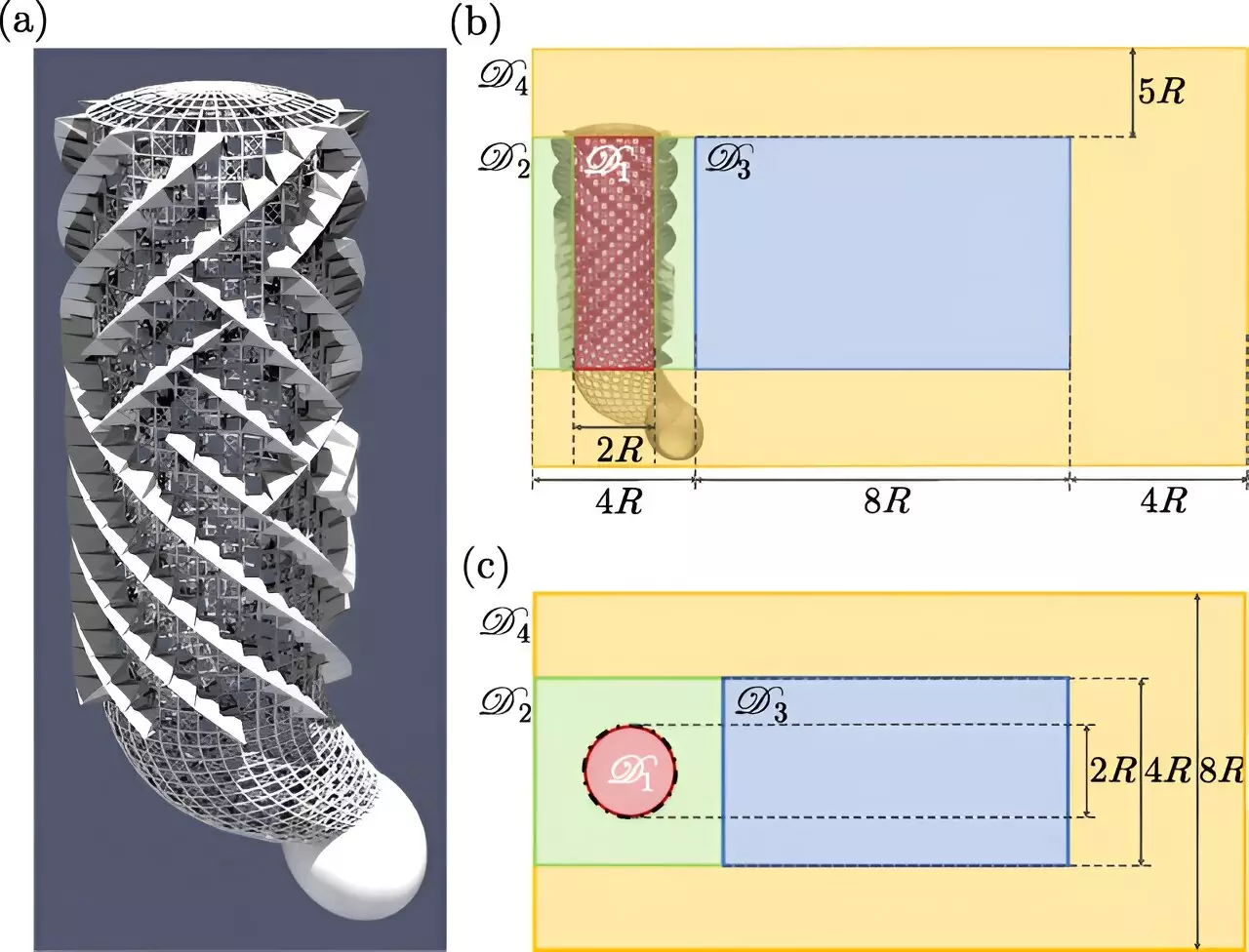The Venus flower basket sponge has long baffled researchers with its delicate glass-like lattice outer skeleton, which seems far too fragile for the harsh conditions of the deep sea. However, new research has uncovered yet another remarkable engineering feat of this ancient creature’s structure. It has the ability to filter feed using only the faint ambient currents of the ocean depths, without the need for any pumping mechanisms. This discovery by an international research team led by University of Rome Tor Vergata and NYU Tandon School of Engineering has far-reaching implications for various fields of engineering.
Through highly detailed computer simulations, the research team discovered how the skeletal structure of the Venus flower basket sponge diverts slow deep-sea currents to flow upwards into its central body cavity. This enables the sponge to feed on plankton and marine detritus without expending any energy on pumping. The spiral, ridged outer surface of the sponge functions as a passive flow control mechanism, similar to a spiral staircase, allowing water to be drawn upwards through its lattice-like frame. This natural ‘”zero energy” flow control is a critical adaptation that allows the sponge to thrive in an environment unsuitable for suspension feeding.
The study found that the sponge’s unique ability to passively draw in food is most effective at very slow current speeds, typically just centimeters per second in its deep-sea habitat. At higher flow speeds, the lattice structure reduces drag on the organism, showcasing its remarkable adaptability to different conditions. The sponge’s skeletal system demonstrates not only structural adaptations but also exceptional fluid dynamic performance. The researchers noted that the sponge has found an elegant solution for maximizing nutrient supply through entirely passive mechanisms.
To understand the sponge’s intricate design, researchers used the powerful Leonardo supercomputer to create a highly realistic 3D replica containing around 100 billion individual points. This “digital twin” allowed for detailed simulations of water flow around and inside the sponge’s complex helical ridge structure. By leveraging the supercomputer’s massive computing power, the team could explore a wide range of water flow speeds and conditions. The insights gained from this biomimetic engineering study could revolutionize the design of chemical reactors, air purification systems, heat exchangers, hydraulic systems, and aerodynamic surfaces.
The engineering community can draw inspiration from the Venus flower basket sponge’s design to optimize flow patterns, minimize drag, and enhance performance in various applications. The ridged, porous surfaces of the sponge could influence the development of more efficient air filtration and ventilation systems for buildings. Additionally, the asymmetric, helical ridges observed in the sponge may inspire the design of low-drag hulls and fuselages that maintain streamlined profiles while promoting air flows inside structures. Nature’s engineering marvel, the Venus flower basket sponge, offers valuable lessons for optimizing efficiency and performance in diverse engineering contexts.


Leave a Reply